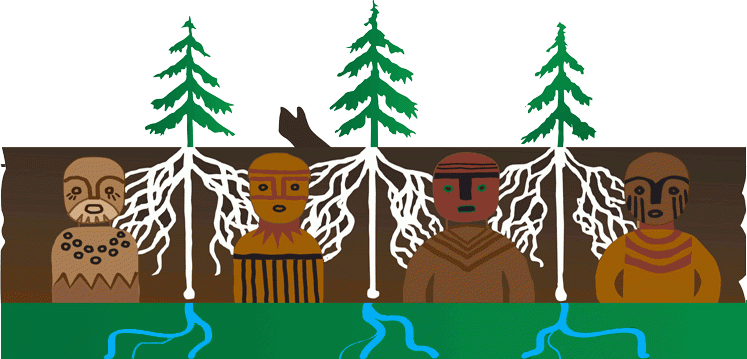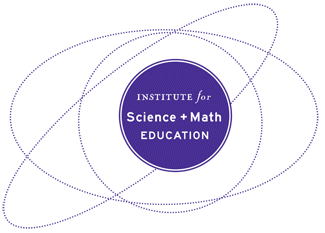Brief 06 - Research With Indigenous Youth
Written By Eve Tuck“Youth” is not only a life-stage but also a social location with material and political consequences. Youth insights help make research findings more meaningful, benefitting researchers and those who use research to make decisions. Yet, often in social science research young people are treated as not-yet adults, incapable of analyzing the world around them. This research brief discusses approaches to research that recognize young people as able to analyze and change the world around them.
These approaches emphasize engaging youth insights and theories about how to improve their lives, communities, and the institutions they inhabit (1). As The Ladder of Participation (2-3) below indicates participation requires youth to be fully informed about how and why they are being involved in the research study. In addition, this brief specifically recognizes the need to utilize Indigenous methodology and epistemology when working with Indigenous youth and Indigenous communities.

Benefits of Research with Youth
Conducting research with youth may also bring some benefits to their lives in the following ways:
- Allow opportunities for youth to develop critical thinking and research skills
- Open avenues for youth to make meaningful change in their communities
- Give space for young people to demonstrate their competencies
- Redefine power relations among researchers and participants as well as between adults and youth
Examples Of Research With Youth
Research methods designed to engage youth often ask young people to reflect on their society, environment, and their imagined futures. Youth researchers have opportunities to create methods in which youth are engaged as experts in their own lives, as complex persons, as co-theorists, and as having perspectives worth sharing. The examples below are adapted from a chapter on youth resistance research by Monique Guishard and Eve Tuck (4) and are by no means exhaustive.
Studies designated as participatory, participatory action research, community based research, or community based design research even more fully engage young people through consultation, shared decision making, youth initiation and direction of the research.
→ Youth led research - gives youth the opportunity to design and implement research as well as opens space for youth to be agents in making real and lived impact in their lives and communities as well as experience as scientists and researchers.
→ Youth led observation - helps train youth to be critical thinkers and questioners while ensuring their own perspectives, needs, and questions are met.
→ Youth led analysis - offers practical experience as researchers and can lead to innovations in data representations.
Critical Ethnography
Critical ethnography acknowledges “the ‘art’ of everyday life,” understanding that “people make sense out of their lives in creative ways and that there are moments of penetrating insight worth exploring and documenting” (5, p.5). For more examples, refer to McCarty, Wyman, and Nicholas6.
Innovations In Interviews
Innovations in interviews and focus groups in youth resistance research are varied, from participants generating questions for other participants to digital formats; from art shares to collaborative storytelling.
Embodied Methods
In Polling for Justice (PFJ), directors Madeline Fox, Brett Stoudt, and Michelle Fine organized a Participatory Action Research (PAR) collective who designed and dispatched a survey on youth experiences of education, health, criminal justice and policing in their schools (7). Fox & Fine made use of embodied methodologies to tell the stories of their survey results which were intimately linked to young people’s bodies, stories of complex personhood and hybrid consciousness. Youth researchers performed the data and required that audiences respond to performances in order to incite recognition of the collective responsibility to address the study’s findings.
Mapping Methods
Patricia Krueger-Henney worked with a Youth Participatory Action Research (yPAR) collective to document criminalizing and punitive school safety measures in New York City public high schools8. To do this, they created spatial-temporal maps of the school safety and security mechanisms, their daily trajectories through school spaces, their evaluations of the safety of different spaces inside the school, along with locations that are most trafficked and avoided. These “mini-geographies” of youths’ cognitive maps of their schools comprised what Cindi Katz has called “countertopographies,” of the school to prison pipeline (9).
Surveys As Public Science
One inspiring new approach comes from Brett Stoudt’s work as statistical consultant in two recent projects, Polling for Justice and the Morris Justice Project. In the latter, Stoudt, Maria Torre, and others worked with an intergenerational team of researchers from the Bronx, the PSP, and Pace University Law Center to survey more than a 1000 residents of the Morris Avenue section of the South Bronx10. They used “the Illuminator,” a van with a projector that was used in Occupy Wall Street demonstrations to project findings from the survey to “discuss what it means to live, work, raise kids, shop, go to school, play, and pray in a community that experienced nearly 4,000 police stops in 2011.”
Participatory Activities & Games
Sarah Zeller-Berkman and others at the Public Science Project & the Intergenerational Change Initiative have created new versions of board games to play with youth in focus group settings to initiate discussions about social injustice (11). They used their Chutes and Ladders-like board game to present their findings on the everyday struggles and boundaries faced by children of incarcerated parents.
The Collective of Researchers on Educational Disappointment and Desire used a board game (a remake of Pop-o-matic Trouble) to initiate focus group conversations about meritocracy, the American Dream, and poverty. In the game, players try to reach all the way around the board to their “American Dreams” without getting tripped up by health, housing, education, policing or social issues or without getting squeezed out or gentrified by opponents. This game w as followed by a facilitated discussion on the myths and realities of meritocracy and implications on schooling (12).
Indigenous Research Methods And Youth
Simply including Indigenous youth in research does not make it Indigenous youth research. When done effectively, research with Indigenous youth and communities reflects the cosmologies of t heir communities. This means that the chain of value of research is shaped by how a community understands the relationships between human knowledge and/within the cosmos. This may mean that:
→ Research collectives refuse or disbelieve the premises of deficit that are so prevalent in research on Indigenous youth
→ Knowledge is shared and not hoarded
→ Inquiry projects have multiple points of entry, and multiple meanings to be drawn
→ There is continuity between a project and community life that moves in recursive ways to further inquiry and further applications of meanings
Things to Consider
Research methods are effective in learning from and with youth when they recognize young people as much more than just future-adults. They recognize youth as having important insights and theories about how to improve their lives, their communities, and the institutions they inhabit1.
In some cases, especially when working with young people who have been denied access to meaningful sites of learning, it is important to design or modify research methods so that they are dissimilar to schooling practices4.
Research methods with young children, struggling readers, young people with disabilities, or young people who speak first languages other than the language used in the research may require modification to rely less heavily on text and instead use images, art supplies, and other tactile strategies to communicate (2).

“Youth” is not only a life-stage, but also a social location with material and political consequences. Youth insights help make research findings more meaningful, benefitting researchers and those who use research to make decisions.
Questions For Practitioners
Do you engage youth in research, program planning, or decision making? Why or why not? Remember, program evaluation is a form of research!
Are there ways to approach youth participation from an Indigenous perspective?
How might you use the methods on page 3 of this brief to engage youth in your work?
How might research with and by youth impact your programs?
Questions For Researchers
- How can we work with youth to design research methods which interrupt rather than recreate problematic practices?
- How can we work with youth to meaningfully analyze & interpret data and distribute to academic and non-academic audiences?
References
1. Tuck E, Yang KW. R-words: Refusing research. In Paris D, Winn MT editors, Humanizing research: Decolonizing qualitative inquiry with youth and communities. Thousand Oakes, (CA): Sage Publications; 2014. p. 223-248.
2. Hart RA. Children’s participation: The theory and practice of involving young citizens in community development and environmental care. New York: Routledge; 1999/2013.
3. Ashenden A. Moving beyond tokenism to make youth participation a reality. Whydev.org; 2013. [cited June 25, 2014]. Available from http://www.whydev.org/moving-beyondtokenism- to-make-youth-participation-a-reality/
4. Guishard M, Tuck E. Youth resistance research methods and ethical challenges. In Tuck E, Yang KW editors, Youth resistance research and theories of change. New York: Routledge; 2013. p. 181-194.
5. Dolby N, Dimitriadis G, & Willis PE. Learning to labor in new times. New York: Routledge Falmer; 2004.
6. McCarty TL, Nicholas SE, & Wyman LT. Re-emplacing place in the “global here and now”: Critical ethnographic case studies of Native American language planning and policy. Int. Multiling. Res. J. 2012; 6(1): 50-63.
7. Fox M, Fine M. Circulating critical research: Reflections on performance and moving inquiry into action. In Cannella G, Steinberg S editors, Critical qualitative research reader. New York: Peter Lang Publishing; 2012. p. 153-165.
8. Krueger P. Navigating the gaze: Young people’s intimate knowledge with surveilled spaces at school [masters thesis]. The Graduate Center, The City University of New York; 2011.
9. Katz C. On the grounds of globalization: A topography for feminist political engagement. Signs. 2001; 24(4): 1213-1234.
10. Stoudt B, Torre M. Action research in the criminal justice systems. In Coghlan D, Brydon-Miller M editors, Encyclopedia of action research. Thousand Oakes, (CA): Sage Publications; in press.
11. Zeller-Berkman S. Peering in: A look into reflective practices in youth participatory action research. Child. Youth Envir. 2007; 17(2): 315-328.
12. Tuck E, Allen J, Bacha M, Morales A, Quinter S, Thompson J, Tuck M. PAR praxes for now and future change: The collective of researchers on educational disappointment and desire. In: Cammarota J, Fine M. editors, Revolutionizing education: Youth participatory action research in motion. New York: Routledge; 2008. p. 49-83.
Images courtesy of EMMAS project: Native Science, Technology, Engineering, Art, and Math Summer Youth Program, 2015.
FOR MORE INFORMATION:
CONNECT WITH US ON SOCIAL MEDIA
- Facebook- Indigenous Education Tools
- Twitter- @indedtools; #indigenousevaluation; #nativeed; #ourstoryourplace
Indigenous Education Tools is a part of the Building Capacity And Cultivating Innovation project (BCCI). BCCI is designed to develop resources and practices that will have exponential impacts on efforts to improve Native student success across a variety of sectors.
Indigenous Education Tools / BCCI Project Contacts:
Megan Bang- mbang3@uw.edu
Charlene Nolan- nolanc3@uw.edu
Gabriel de Los Angeles- kender20@uw.edu



